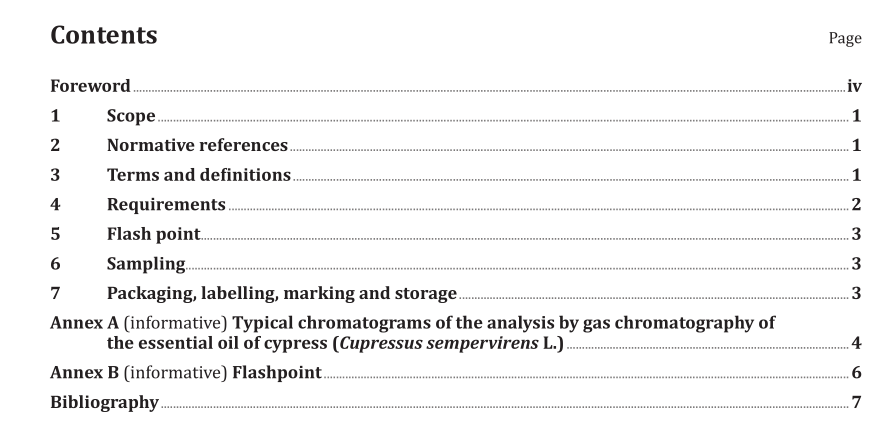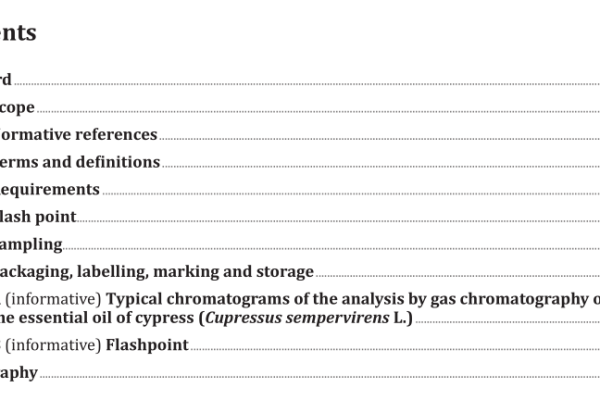ISO 20809:2017 pdf download – Essential oil of cypress (Cupressus sempervirens L.).
1 Scope This document specifies certain characteristics of the essential oil of cypress (Cupressus sempervirens L.) in order to facilitate assessment of its quality. 2 Normative references The following documents are referred to in the text in such a way that some or all of their content constitutes requirements of this document. For dated references, only the edition cited applies. For undated references, the latest edition of the referenced document (including any amendments) applies. ISO/TS 210, Essential oils — General rules for packaging, conditioning and storage ISO/TS 211, Essential oils — General rules for labelling and marking of containers ISO 212, Essential oils — Sampling ISO 279, Essential oils — Determination of relative density at 20 °C — Reference method ISO 280, Essential oils — Determination of refractive index ISO 592, Essential oils — Determination of optical rotation ISO 875, Essential oils — Evaluation of miscibility in ethanol ISO 11024 (all parts), Essential oils — General guidance on chromatographic profiles ISO 18321, Essential oils — Determination of peroxide value 3? Terms? and? definitions For the purposes of this document, the following terms and definitions apply. ISO and IEC maintain terminological databases for use in standardization at the following addresses: — ISO Online browsing platform: available at https://www.iso.org/obp — IEC Electropedia: available at http://www.electropedia.org/ 3.1 essential oil of cypress essential oil obtained by steam distillation of branches and leaves of Cupressus sempervirens L. Note 1 to entry: For information on CAS number, see ISO/TR 21092.
4.2? Chromatographic? profile Carry out the analysis of the essential oil by gas chromatography. Determine the chromatographic profile in accordance with ISO 11024 (all parts). In the chromatogram obtained, identify the representative and characteristic components shown in Table 2. The proportions of these components, indicated by the integrator, shall be as shown in Table 2. This constitutes the chromatographic profile of the essential oil.
ISO 20809:2017 pdf download – Essential oil of cypress (Cupressus sempervirens L.)






